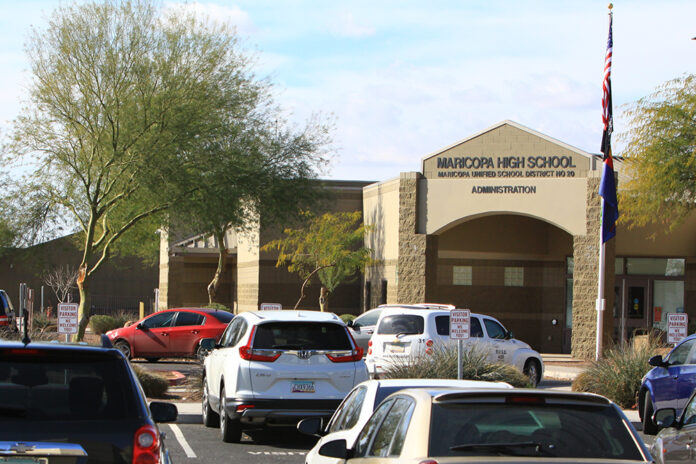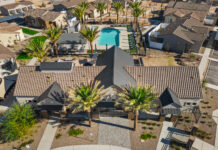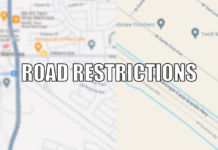
With a high school already more than 200 students over capacity, Maricopa Unified School District is making moves for short-term solutions while weighing options for the long term.
In a special meeting Wednesday, the governing board approved placing eight almost-new portable buildings on the east side of campus to accommodate 16 classrooms. The plan is to place four or more portables on a strip of land between the baseball and softball fields and the others in the north section of the parking lot next to the band room. As planned, the portables would take up about 24 parking spaces that are rarely used.
The governing board followed the recommendation of Principal Brian Winter and rejected an option that would have placed all the portables in the stadium parking lot, a plan that would have discarded 82 parking spaces heavily used during events.
The main purpose of the special capital-improvements meeting, however, was looking at the needs in space and upkeep for the entire district. According to Winter, the high school already has enrollment of more than 2,330.
Mark Rafferty, a partner at Facility Management Group, said the demographic projections for the high school are “astonishing.”
“We see a high school population growing by 1,600 students in the next six years,” he said.
Rafferty presented the needs and estimated costs of changes needed around the district as MUSD creates its capital improvement master plan. He said a second high school is a necessity.
“If you put a shovel in the ground tomorrow, you’ll only be a year behind,” he said.
Main capital costs
- $83 million – Construction/property purchase for a second high school
- $24 million – “life cycle” maintenance projects over six years, such as replacing HVAC, roofing, weather proofing, carpeting, asphalt to correct normal wear and tear at existing facilities
- $14.5 million – Energy-conservation projects such as LED lighting district-wide, solar shading devices and energy management system for HVAC
- $11 million – a rough estimate for technology projects district-wide
- $9.6 million for additional activity rooms at six elementary schools, a need universally expressed by principals.
- $3.2 million – Transportation upgrades of six new buses and two white fleet vans every two years for six years
The estimated total for capital projects is $148 million.
However, board member Patti Coutre said the technology portion did not take into account the current inventory is new, paid for by override funds.
“The override moneys are not figured in that estimate,” she said.
Rafferty said cutting some planned facilities from the new high school costs could get the total to $98 million, and having all new technology paid for by the override could move it closer to $75.
Don Brubaker, principal architect at One Architecture, said a new high school campus would require 65-80 acres. He said a “starter” high school had to have at least space to accommodate teaching, but support space like a cafeteria, gyms and arts programs could be compromised.
Board member Torri Anderson said she did not think two schools sharing some facilities would be viable.
“Our current facilities aren’t going to support another group of students,” she said. “I just don’t see both high schools being able to utilize the current high school facilities as far as for sports, band, that sort of thing. I think it’s unrealistic for us to just go with a starter high school.”
“You’ll need a piece of property that will accommodate the ultimate growth,” Brubaker said.
Rafferty said Arizona School Facilities Board was already looking at the numbers for Maricopa High School because of the profound rate of growth projections. SFB has asked the Legislature for at least partial funding for school space ($22.5 million) and school land ($3 million).
The district also has to consider the shrinking capacity at its two middle schools, especially Desert Wind. Since sixth grade was moved out of the elementary schools to the middle schools, Desert Wind and Maricopa Wells have been full while most of the elementary campuses are below capacity. If the option of moving sixth grade back to elementary is eliminated, the district may have to consider a third middle school soon.
The study of the capital improvement situation has been ongoing the past five months as MUSD officials consider asking taxpayers for a bond on the November ballot. At the next regular meeting of the board Jan. 23, Superintendent Tracey Lopeman is asking to work with consultants on a bond-election plan. (The board will also consider selling vacant land it owns.) Rafferty said even if a bond election were successful it would take up to three years to reach a date of occupancy in a new high school. But the necessity of another high school was not a point of debate.
“At the very least,” said board member Joshua Judd, “we see from the demographic information, that is something we clearly cannot do without.”







![City gave new manager big low-interest home loan City Manager Ben Bitter speaks during a Chamber of Commerce event at Global Water Resources on April 11, 2024. Bitter discussed the current state of economic development in Maricopa, as well as hinting at lowering property tax rates again. [Monica D. Spencer]](https://www.inmaricopa.com/wp-content/uploads/2024/04/spencer-041124-ben-bitter-chamber-property-taxes-web-218x150.jpg)

![3 things to know about the new city budget Vice Mayor Amber Liermann and Councilmember Eric Goettl review parts of the city's 2024 operational budget with Mayor Nancy Smith on April 24, 2024. [Monica D. Spencer]](https://www.inmaricopa.com/wp-content/uploads/2024/04/spencer-042424-preliminary-budget-meeting-web-218x150.jpg)

![Alleged car thief released without charges Phoenix police stop a stolen vehicle on April 20, 2024. [Facebook]](https://www.inmaricopa.com/wp-content/uploads/2024/04/IMG_5040-218x150.jpg)





